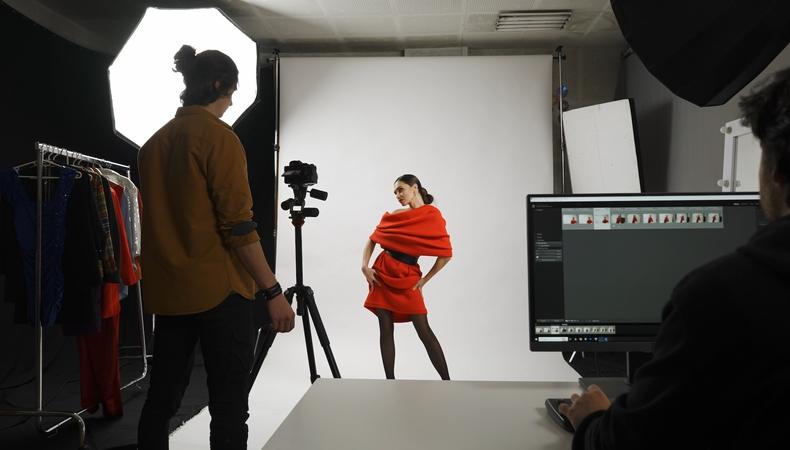Modeling is more than a series of rehearsed actions or practiced facial expressions—it’s the art of communication through the body. Great models know that every movement counts, and often, the smallest gestures create the biggest impact. While bold, exaggerated motions have their place, subtlety often tells a more powerful story. From micro-expressions to gentle shifts in weight, mastering these nuances can transform your performance in front of the camera. Whether you’re just starting or refining your craft, learning how to control and express emotion through subtle movements will help you perfect your poses and elevate your overall modeling presence.
Understanding the Power of Subtlety in Modeling
In modeling, subtlety is what separates a snapshot from a masterpiece. A slight turn of the chin, the way light catches your eyes, or the gentle curve of your hand can speak volumes without saying a word. Subtle movements invite the viewer to look closer, to connect with the mood or story being portrayed. They convey sophistication and confidence—two essential qualities every model should aim for.
The beauty of subtle movements lies in their ability to evoke emotion naturally. Instead of forcing a feeling or expression, you let it unfold through micro-actions. A tiny adjustment in your shoulders can change your entire posture from timid to bold. The way you breathe can alter the rhythm of your body, bringing authenticity to your shots. When done right, subtlety turns still images into living stories filled with emotion and depth.
For professional models, understanding subtlety means having complete control over their bodies. It’s about awareness—knowing where every part of your body is and how it contributes to the overall picture. It’s not about doing less, but about doing everything with intention.
Why Subtle Movements Matter in Modern Photography
Today’s photography world thrives on authenticity. The era of stiff, overly dramatic modeling has given way to a preference for natural, fluid expressions. Photographers and brands alike want images that feel real and relatable. Subtle movements help achieve that balance between perfection and emotion, creating a sense of honesty that connects with viewers.
When you incorporate subtlety into your modeling, you make it easier for the camera to capture genuine moments. Small, deliberate motions—like gently brushing your hair aside, turning your face toward the light, or softly relaxing your hands—create a sense of life in the frame. These details draw the audience in and keep their attention longer.
Moreover, subtle movements make collaboration with photographers smoother. They allow photographers to capture spontaneous, authentic images without the need for constant direction. This kind of fluid teamwork often results in more dynamic and visually appealing photos. It also makes your portfolio stand out, showcasing your ability to convey emotion effortlessly.
Developing Awareness and Control
Before you can master subtle movements, you need to develop a strong sense of body awareness. This means understanding your natural posture, how your body reacts to different emotions, and how small shifts influence your overall appearance.
One effective exercise is practicing in front of a mirror. Observe how different positions and angles change your look. Try soft transitions—move your head slightly, shift your weight, relax your fingers—and see how these adjustments affect the mood. Pay attention to your facial expressions too. A raised eyebrow, a half-smile, or even a steady gaze can dramatically change the tone of your photo.
Breathing is another essential element of subtle movement. Controlled breathing helps maintain a relaxed body and fluid posture. When your body is tense, your movements appear stiff and forced. Focused breathing, on the other hand, makes your motions smoother and more natural.
Many top models also practice techniques like yoga or dance to improve their body awareness. These activities teach balance, flexibility, and flow—all vital components in mastering the art of subtle motion. The more attuned you are to your body, the better you’ll be at communicating emotion through even the smallest gestures.
The Role of Expression in Subtle Movements
Facial expression is the heart of subtlety. A single glance can express sadness, strength, confidence, or mystery. However, overacting can break the illusion. The key is restraint—learning to say more with less.
Start with your eyes. They are the most expressive part of your face. A slight narrowing can add intensity, while a gentle widening can suggest vulnerability or curiosity. Use your gaze to guide the viewer’s attention and enhance the mood of the shot.
Next, consider your mouth. A soft smile can appear inviting and natural, while a relaxed, neutral expression might convey calmness or confidence. Avoid exaggerated emotions unless the theme demands it. Instead, aim for expressions that feel authentic and aligned with the concept of the shoot.
Even your breathing and thoughts influence your expressions. Thinking about a specific emotion or memory can help you project that feeling more naturally. When your expression aligns with genuine emotion, your subtle movements become more convincing and engaging.
Using Micro-Movements for Dynamic Posing
Micro-movements are tiny, controlled adjustments that bring energy and life to your modeling. Instead of jumping from one static pose to another, think of your performance as a continuous flow. Slightly turn your head, shift your shoulders, or move your hands gradually between frames. These gentle transitions create natural variations that look effortless yet captivating.
A great way to practice this technique is by working with a continuous shooting mode. As you move slowly and fluidly, the camera captures multiple frames that show the evolution of your expression and posture. This gives photographers a range of images to choose from, all slightly different but consistently connected.
Micro-movements also help avoid stiffness during long photo sessions. By constantly keeping your body in gentle motion, you maintain a natural energy and rhythm. It prevents fatigue and ensures your poses look fresh and organic. Remember, even the smallest movement can completely transform how a photograph feels.
Subtle Movements in Different Types of Modeling
The importance of subtlety extends across all modeling genres, but how you apply it can differ depending on the type of work you’re doing.
Fashion modeling: In high fashion, subtle movements add sophistication. Small head tilts or graceful hand placements emphasize clothing details without overpowering them.
Commercial modeling: Here, natural expressions are key. Gentle gestures and relatable movements make you appear more approachable and authentic, which is essential for lifestyle and advertising shoots.
Runway modeling: While runway walking is often bold, adding slight fluidity to your arms or gaze can elevate your walk. Subtlety shows confidence and elegance, helping you stand out without breaking the rhythm.
Editorial modeling: Editorial shoots are all about storytelling. Using subtle movements helps create a narrative flow, turning each image into a piece of the story.
Understanding the context and goal of each shoot will guide how you use subtlety to enhance your performance.
Practice Techniques for Subtle Movement Mastery
Like any skill, mastering subtle movement requires consistent practice. Here are a few practical ways to refine your technique:
Film Yourself Regularly: Record short practice sessions to analyze how your body moves. Pay attention to stiffness, unnatural transitions, or over-exaggeration.
Slow Down Your Transitions: Move deliberately and focus on the journey between poses. This trains your body to stay fluid and expressive.
Experiment with Lighting: Different lighting setups emphasize different movements. Soft light, for instance, highlights gentle gestures, while hard light can exaggerate even minor adjustments.
Collaborate with Photographers: Work with photographers who value subtlety and can provide feedback on how your movements translate through the lens.
Stay Relaxed: Tension is the enemy of subtlety. Regular stretching, breathing exercises, or light warm-ups before shoots can help maintain a relaxed posture.
Each session is an opportunity to refine your technique and discover what movements suit your body and style best.
Final Thoughts
In modeling, the most captivating moments often come from the smallest actions. Subtle movements give your work depth, emotion, and authenticity. They demonstrate professionalism and body awareness, proving you understand how to communicate through more than just your look.
By mastering subtlety, you not only enhance your visual storytelling but also make a lasting impression on photographers, brands, and audiences alike. Remember, modeling isn’t just about holding a pose—it’s about breathing life into it. Every tiny gesture matters, and when executed with intention, those details can elevate your modeling game to an entirely new level.





























